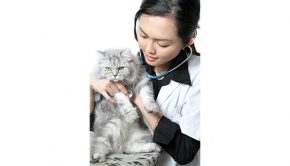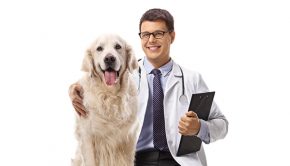Pain-Free Pooch ~ Five Natural Therapies that Work
Because dogs won’t always let us know when they’re hurting, some people assume they don’t experience pain the same way we do, but that’s not the case. Instincts retained from their wild heritage will generally prompt them to hide pain as it’s a sign of weakness.
The truth is that arthritis and muscle or joint injuries are just as uncomfortable for dogs as they are for us, and many canine illnesses generate significant pain. While conventional medications can ease discomfort, they’re not the only or even the best options in many cases.
Alternative therapies can be helpful in managing and relieving pain and work best as part of a whole body wellness program designed for a dog’s individual needs. To that end, always consult with an integrative veterinarian before starting any new treatment. Together, practitioner and owner will note that some of the following modalities may be contraindicated in some situations—for example, massage should never be performed on or near a tumor.
Canine Massage: Dogs love massage because they crave being touched. Physical contact from another being provides a calming effect and brings comfort. Skin, the largest sense organ in the body, is loaded with sensory receptors and nerve endings that register touch, temperature and pain, and send information to the brain. Massage therapy relaxes muscles and also stimulates endorphins, increases circulation, elevates oxygen levels, flushes toxins, helps with inflammation, strengthens the immune system and accelerates healing. All of these benefits can contribute to effective pain management.
Acupuncture and Acupressure: Both of these time-honored modalities are based on the concept of keeping vital energy flowing through the body and seek to stimulate key points along the energy meridians beneath the skin. Acupuncture involves the insertion of small needles at these points, while acupressure uses fingers to apply pressure to the same points. Both modalities are widely known to assist in managing pain and anxiety.
Energy Healing: Here, the practitioner improves the flow of energy in an animal’s body using a range of gentle and powerful natural therapies. During a treatment, the trained healer sends subtle energy through the hands to promote physical and emotional balance and healing. While conventional medicine follows the belief that treatments for disease or injury must be strictly biological, energy medicine works to restore the patient’s health by treating the mind, body and spirit in nonphysical ways. Energy healing modalities available for dogs include Reiki, qigong, Healing Touch and Tellington Touch.
Cold Laser Therapy: Developed more than 20 years ago, cold laser therapy has become a popular alternative treatment around the world for aches and pains in dogs. It directs highly concentrated coherent light waves to muscles, tissues and organs, reducing inflammation and muscle spasms. It’s also applied to disc and other spine-related issues. Low-level cold laser therapy is painless, noninvasive and takes only minutes. The effects are similar to those provided by non-steroidal medications, with negligible negative side effects.
Hydrotherapy: The benefits of swimming are renowned. When dogs swim, they feel a resistance to movement, which makes a vigorous five-minute swim virtually equivalent in energy expended to a five-mile run. Some dogs like swimming even better than running. Hydrotherapy, which includes exercise on an underwater treadmill combined with swimming, is particularly helpful. The effect on senior dogs is especially dramatic, affording them a painless and enjoyable way to move about and exercise. Water’s natural buoyancy supports the dog, lessens stress on joints, facilitates greater movement and provides a safe and healthful form of exercise for those suffering injuries, disease or pain.
The best choice of therapies for an individual animal will depend on the dog’s condition and recommendations by the family veterinarian. Selected and practiced properly, these complementary modalities can make a major impact in a canine’s physical and emotional well-being, while minimizing or even eliminating the need for medications.
Jennifer Kachnic is the author of Your Dog’s Golden Years: Manual for Senior Dog Care Including Natural Remedies and Complementary Options. She is a certified canine massage therapist, animal Reiki practitioner and certified therapy dog handler with the American Humane Association. Learn more about this president of The Grey Muzzle Organization at GreyMuzzle.org.
<












